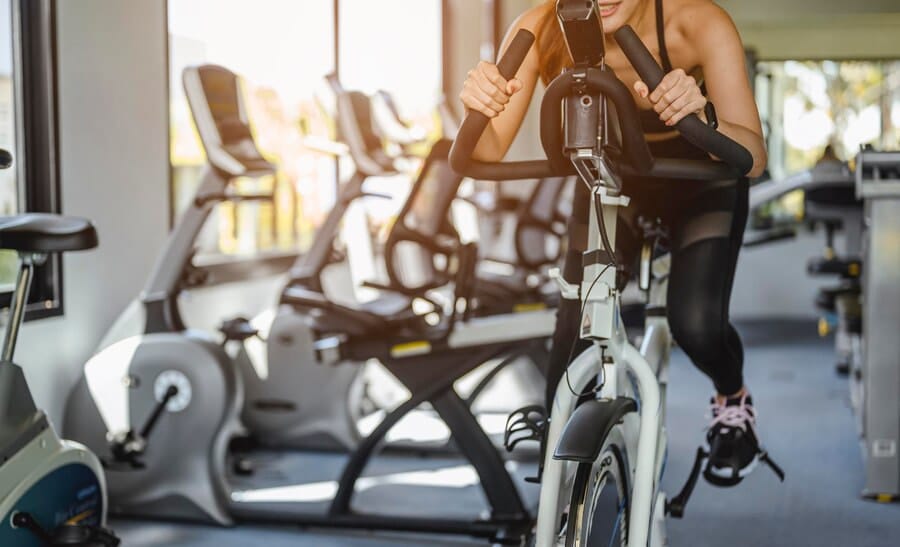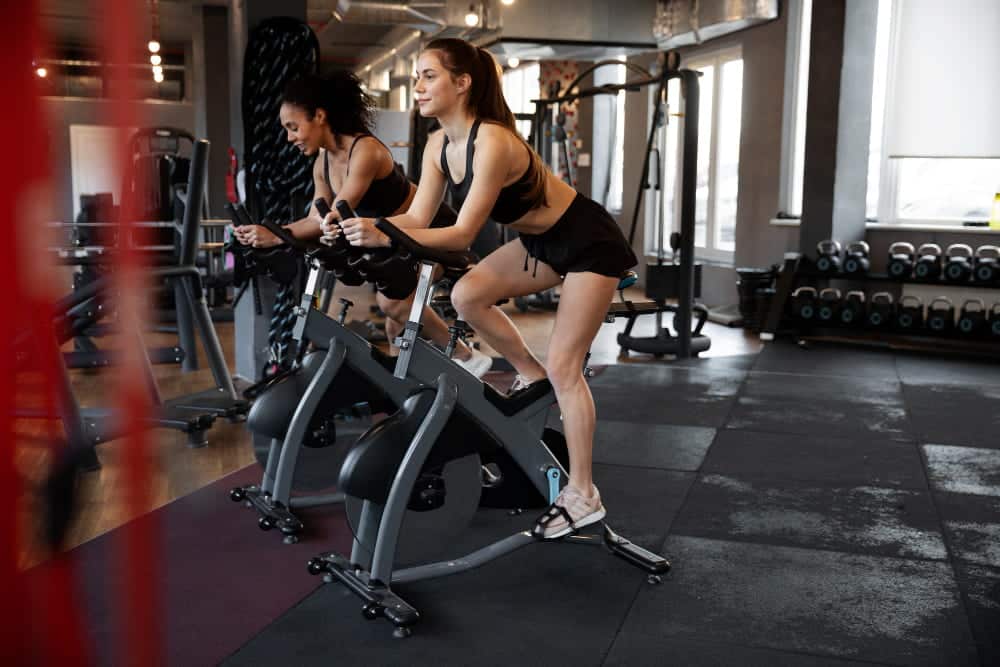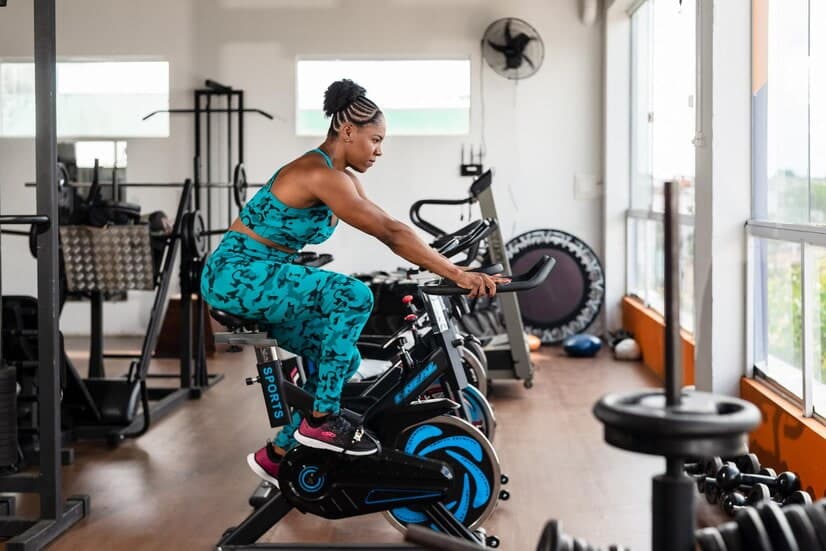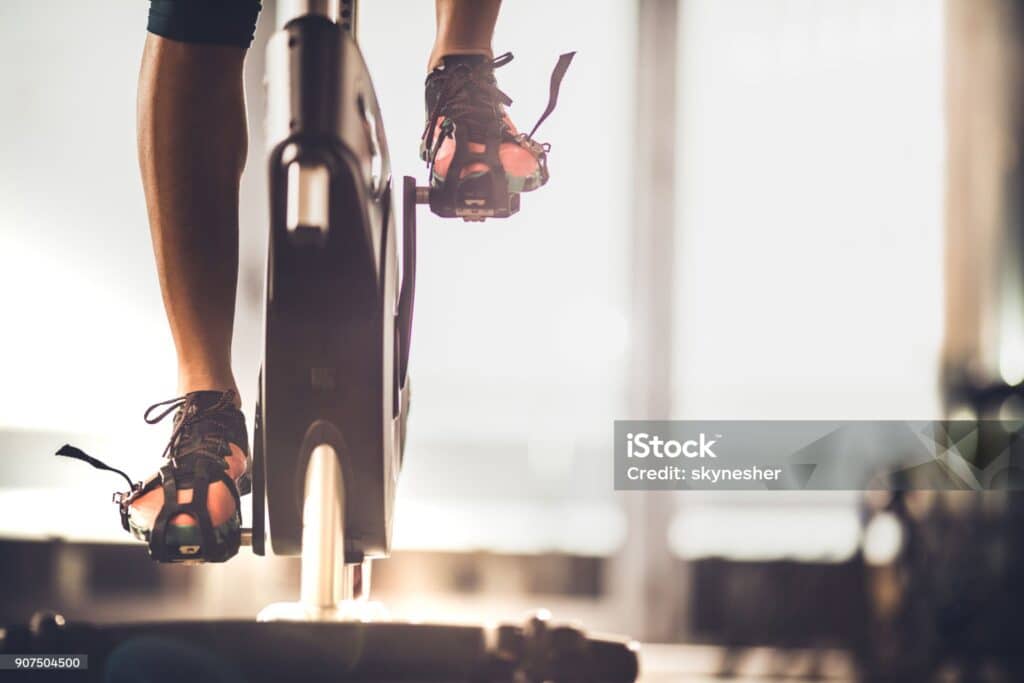
Summary
Welcome » Welcome » Tips for improving » How to improve your breath when cycling: Tips for optimising your breath
How to improve your breath when cycling: Tips for optimising your breath
Improving your breathing on the bike is essential for those who want to progress and build up their endurance. By using the right breathing techniques, you can transform your performance on the exercise bike.
Summary
Introduction to improving breathing on a bike
In this article, you'll discover how to adjust your breathing, strengthen your respiratory muscles and monitor your progress effectively. Whether you're a beginner or an expert, these tips will help you maximise your efforts.
Improving your breathing is essential for all cyclists, whether you're a beginner or more experienced. Controlled breathing not only increases your performance, but also improves your endurance over the long term. Whether you cycle indoors or outdoors, managing your breathing has a direct influence on the effectiveness of your training.
In this article, we'll explore how to optimise your breathing specifically for the exercise bike. You'll discover easy-to-implement techniques, precise exercises and essential adjustments to boost your breathing capacity.
Ready to transform the way you breathe on your bike? Let's get started!
Understanding the respiratory physiology of cyclists
To improve your breathing, it's crucial to understand how breathing works during sport. As you pedal, your body needs more oxygen to fuel your muscles. Breathing plays a central role in meeting this increased demand.
Mechanisms of breathing during exercise
During exercise, your lungs exchange gases at an accelerated rate: oxygen in, carbon dioxide out. This allows your muscles to continue producing energy. The diaphragm, the key muscle in breathing, and the intercostal muscles work together to optimise these exchanges and maintain your endurance.
Factors influencing respiratory capacity
Your general physical condition plays a major role in the quality of your breathing. A fit cyclist will have more efficient breathing and better control. What's more, your posture on the bike has a direct influence on your lung capacity. Poor posture can reduce the opening of your ribcage, limiting the quality of your breathing.
Basic techniques to improve your breathing
To maximise your exercise bike performance, it's essential to work on simple but effective breathing techniques. These methods will enable you to improve your breathing while pedalling, increasing your endurance and comfort during exercise.
Abdominal breathing
Abdominal breathing, also known as diaphragmatic breathing, is a basic technique. It allows you to fill your lungs more deeply by using your diaphragm rather than your chest. On an exercise bike, concentrate on your belly as it inflates on inhalation and deflates on exhalation. Practise this technique regularly to master it. A simple exercise is to take 4 seconds to inhale and 4 seconds to exhale, while pedalling at a moderate pace.
Synchronising breathing with pedalling
Synchronising your breathing with the pedalling motion can significantly improve your breath. Inhale over several pedal revolutions, then exhale in the same pattern. Adapt this rhythm according to the intensity of the effort: for more intense sessions, faster breathing will be necessary. The aim is to avoid feeling out of breath, by maintaining a fluid and constant rhythm.

Specific exercises on the exercise bike
To improve your breathing, it's not enough to pedal without a strategy. Specific exercises target the respiratory system and help optimise your lung capacity. By combining breathing intervals and strengthening exercises, you can stimulate your breathing effectively.
Breathing interval sessions
Intervals are an excellent way of getting your breathing to adapt to different levels of intensity. Structure your session with intense pedalling phases where you breathe rapidly, followed by recovery phases where you slow your pace and breathe deeply. For example, after a 5-minute warm-up, do 30 seconds of intense sprinting, then recover for 1 minute. Repeat this cycle 6 to 8 times. This will help stimulate your lungs and increase their ability to deliver oxygen quickly.
Exercises to strengthen the respiratory muscles
To go further, strengthen your respiratory muscles using the resistance of the bike. Pedal at a moderate intensity, but increase the resistance of the bike to put more strain on your respiratory muscles. In addition, you can use accessories such as elastic bands to strengthen the muscles of the torso and make it easier to open the rib cage. These exercises promote more powerful, longer-lasting breathing.
Optimising posture for better breathing
Correct posture on your exercise bike is essential for maximising your breath. Correct body alignment allows you to breathe more easily and oxygenates your muscles better, which translates into better endurance.
Adjusting the exercise bike
Start by adjusting your bike to optimise the opening of the ribcage. The height of the saddle should allow the knee to bend slightly when the pedal is down. The handlebars should not be too low, as this could compress the chest and restrict breathing space. Make sure your posture is straight with your shoulders slightly back, to allow your lungs to expand.
Techniques for relaxing the shoulders and neck
Tight shoulders and neck can restrict breathing. To avoid this, perform mobility exercises before and during your sessions. Relax your shoulders by gently rotating them and lowering them to open up the ribcage. Remember to stretch your neck to avoid any tension, by gently tilting your head to either side. By relaxing these areas, you allow your lungs to expand fully, making breathing easier.
Nutrition and hydration to support respiratory capacity
To improve and maintain good respiratory capacity, nutrition and hydration play a key role. Good nutrition enables your body to function efficiently, while adequate hydration supports your respiratory performance, particularly during your exercise bike sessions.
Foods that promote good oxygenation
Certain nutrients are essential for maximising your body's oxygen supply. Iron-rich foods such as spinach, legumes and beef help produce red blood cells that carry oxygen to your muscles. Antioxidants, found in berries, nuts and green vegetables, reduce inflammation and promote better breathing. Natural supplements, such as magnesium or omega-3s, can improve circulation and support your respiratory capacity.
Importance of hydration on respiratory function
Staying hydrated is essential for good lung function. When you cycle, dehydration can make it harder to breathe as your airways contract. Drink regularly before, during and after exercise. We recommend drinking between 500 and 750 ml of water per hour of training, and adding electrolytes to help retain water. Keep a bottle of water handy during your session to ensure continuous hydration.
Mental management for efficient breathing
Mental management is an often underestimated factor when it comes to breathing efficiently during exercise. In fact, a calm and concentrated mind allows you to control your breathing better, which is crucial for improving your breathing on an exercise bike.
Relaxation and visualisation techniques
Mental relaxation helps to reduce physical tension, facilitating deeper breathing. Before starting your session, take a few minutes to practise some meditation or visualisation exercises. Close your eyes, concentrate on breathing slowly and evenly, and imagine your breath flowing freely with each pedal stroke. This technique calms the nervous system and optimises your breathing capacity throughout your workout.
Strategies for managing breathlessness and anxiety
Breathlessness can quickly become a source of anxiety, especially during intense exertion. If you feel panic rising, try to regain control with slow, controlled breathing. Inhale deeply through your nose for four seconds, hold your breath for two seconds, then exhale gently through your mouth for six seconds. This technique helps to calm hyperventilation and to better manage those moments when your breath becomes short.
Monitoring and improving respiratory capacity
Improving your breathing on a bike isn't something you can do overnight. To measure your progress and adjust your training, it's essential to monitor your breathing capacity regularly. This will enable you to see improvements and adapt your sessions accordingly.
Measurement and assessment tools
There are several simple ways to monitor your lung capacity at home. You can carry out breathing capacity tests, such as the maximum breath test (spirogram), or use connected devices that measure your breathing rate during exercise. These tools give you a clear idea of your progress and help you identify when you're running out of breath.
Drawing up a personalised progress plan
To make effective progress, it's important to set clear goals. Start by assessing your current level, then set targets to reach, such as extending the duration of your sessions or reducing the recovery time between intervals. Regularly adjust the intensity of your workouts to continue to stimulate your respiratory system without overloading your capacities. The key is to remain patient and gradually increase the difficulty for lasting results.
Integrating breathing into a complete workout
Improving your breathing shouldn't be limited to the exercise bike. Incorporating breathing techniques into your overall training will strengthen your lung capacity and improve your overall performance.
Combining with other forms of exercise
Yoga and Pilates are excellent disciplines to complement your breathing work. These practices teach you to control your breath while working on flexibility and strength. Incorporating yoga or Pilates sessions into your training programme helps to strengthen your respiratory muscles while teaching you to synchronise your breathing with movement.
Strength training, on the other hand, supports your respiratory muscles by making them more robust. Exercises such as squats or deadlifts, performed with controlled breathing, promote better respiratory endurance.
Weekly planning for continuous improvement
For optimum results, plan your workouts by alternating between different types of session. Combine cardio sessions, such as the exercise bike, with muscle-strengthening exercises and targeted breathing sessions, such as yoga. Don't forget to include periods of active recovery, essential for allowing your lungs to regenerate and gradually strengthen. The key is regularity and variety to avoid stagnation.
Adapting techniques to different levels
Whether you're a beginner or an experienced cyclist, it's important to adapt your breathing techniques to your level. A gradual approach will maximise your progress without the risk of discouraging you or exhausting you.
Tips for Beginners
If you're just starting out, it's crucial to take things one step at a time. You need to be patient to get your body used to new breathing techniques. Start with short, low-intensity sessions, focusing on abdominal breathing and synchronisation with pedalling. Gradual progress is essential to avoid frustration. Watch for signs of improvement such as improved endurance or reduced breathlessness. Don't hesitate to gradually lengthen the duration of your sessions to improve your breath over the long term.
Challenges for advanced cyclists
For experienced cyclists, breathing techniques need to be adjusted for more intense efforts. Working on breathing during sprints or high-intensity intervals is essential. Use techniques such as controlled hyperventilation to prepare for virtual competitions, and make sure you adapt your breathing patterns to the effort to maximise your performance. At this stage, breath control becomes a major asset for increasing efficiency and power.
Solving common problems
Even with good preparation, breathing problems can occur during your exercise bike sessions. It's essential to know how to identify these obstacles so that you can overcome them quickly and prevent them from slowing down your progress.
Managing excessive breathlessness
Breathlessness can occur even after a short effort if your breathing is not well controlled. This can be caused by a number of factors, such as over-exertion, poor posture or inefficient breathing. The solution? Take the time to refocus on your breathing, by practising slower, deeper inhalation and exhalation cycles. If breathlessness becomes chronic, it's important to consult a health professional to rule out any underlying respiratory problems, such as asthma.
Adapting to specific conditions
Some cyclists have to cope with special conditions, such as simulated altitude or allergies. Breathing at simulated altitude, for example, can make training more difficult because the air is less rich in oxygen. In this case, gradually adapt the intensity of the effort and lengthen recovery times to allow your body to acclimatise. If you suffer from allergies or asthma, it's essential to follow the appropriate treatment and make sure your airways are clear before you start training.

Conclusion
Improving your breathing while cycling is essential to optimising your performance and endurance. By working on abdominal breathing and synchronising your breathing with your pedalling, you'll make effective progress. Specific exercises and an adapted posture also strengthen your respiratory capacities.
Nutrition, hydration and mental management play a key role in breathing. Monitoring your progress and adjusting your training will help you achieve realistic and measurable goals. Every level of cyclist can adapt these techniques to make progress.
Go indoor cycling with Space
You want to combine cycling and weight training ? At SPACE CYCLE, our POWER RIDE session offers you a complete workout, combining cardio and muscle strengthening, with a particular focus on the core.
Immerse yourself in an immersive experience, with lighting effects and a dynamic atmosphere, orchestrated by our coaches and their exclusive playlists.
Come and experience unforgettable sessions indoor cycling in our studios de Bonne Nouvelle or Bastille!
Read also
RPM how many times a week: Guide to optimising your sessions
Exercise bike benefits: why adopt it now?
Follow us
on instagram
To follow all our news,
take advantage of our tutorials and participate
in our many contests.
Breaking news!
Receive our newsletter.





